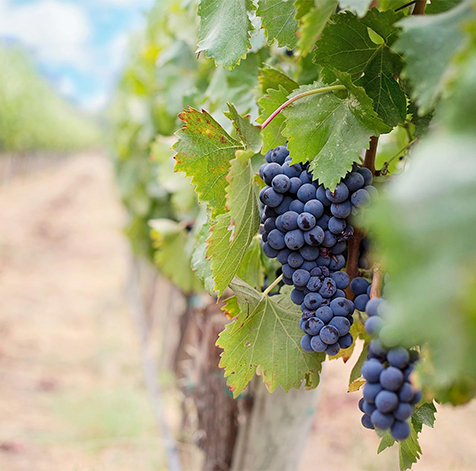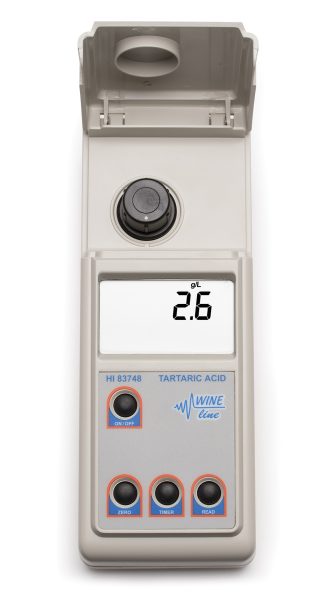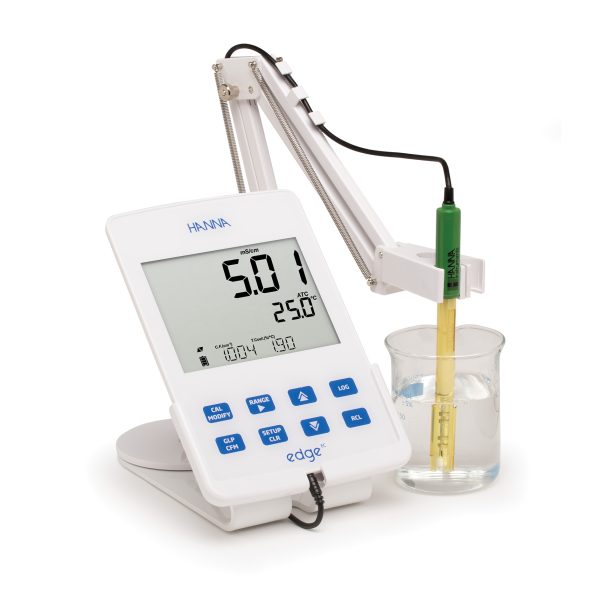Tartaric acid is specific to grapes. It is the most important fixed acid. Its quantity contained in the grape decreases when the summer is hot. He’s sometimes necessary to add it to the must when it suffers from a lack of acidity and the wine risks to be soft and insufficiently built. European legislation allows the use of this acid at maximum doses of 1.5 g/L for musts and 2.5 g/L for wines. Conversely, too high a proportion of this acid gives an astringent and harsh wine and can promote the formation of tartaric precipitation. Salts of tartaric acid are few soluble. Due to the content of tartrate, potassium and calcium ions in wine, bitartrate potassium and calcium tartrate naturally tend to precipitate. The development of crystallization depends on various factors including the temperature, pH, ethanol content. In wine, a concentration of tartaric acid greater than 4 g/L can lead to the appearance of a scale deposit.

For determination of tartaric acid in wine Hanna Instruments have simple
HI83748
Photometer for determination of Tartaric acid in wine
The HI83748 photometer is for the determination of tartaric acid in wine. Hanna’s photometers feature an advanced optical system; the combination of a special tungsten lamp, a narrow band interference filter, and silicon photodetector ensure accurate photometric readings every time. The exclusive cuvette locking system ensures that the cuvette is inserted into the measurement cell in the same position every time to maintain a consistent path length.
Features at-a-glance
Built-in timer – display of time remaining before a measurement is taken. Ensures that all readings are taken at the appropriate reaction intervals for the test being performed.
Zero key – a simple press of the zero key on the face of the meter will account for the color and imperfections in the wine sample before reagent addition.
Auto shut – off – automatic shut-off after 15 minutes of non-use when the meter is in measurement mode. Prevents wastage of batteries in the event the meter is accidentally left on.
Battery status indicator – indicates the amount of battery life left.
Error messages – messages on display alerting to problems including no light, inverted sample, and out of range.
Units of measure – appropriate unit of measure is displayed along with reading.
EXTRA TIP:
This acid concentration should not be confused with total or titratable acidity of wines, which are often expressed as tartaric acid content as well. Although it is tartaric acid that is predominant acid present (up to 60% of total acidity), others like malic, citric, and several volatile acids contribute significantly to total acidity.
Tartaric instability is one of the most frequent causes of precipitation in wines. Essential acid of wine, tartaric acid is in balance with two salts: potassium hydrogen tartrate and neutral calcium tartrate, whose solubility is limited. A first tartaric precipitation occurs during fermentation alcoholic, linked to the increase in the alcohol content of the must. If it is eliminated by handling wine, further precipitation may occur in bottles. For sparkling wines, when the bottle is opened, the stacking (and sometimes the loss of liquid caused) is to be avoided and causes the image to drop dramatically of the product. As a result, tartaric stabilization is one of the major concerns cellar masters and other wine technicians.

The evaluation of tartaric instability is useful at 2 stages of the process of stabilization:
– before treatment to know the risk of precipitation in a wine,
– after treatment to check its effectiveness.
– after treatment to check its effectiveness.
The Wurdig test is used to determine the saturation temperature (T.sat), value above which a wine can solubilize hydrogen tartrate potassium. Precipitation is accelerated by the addition of crystals potassium hydrogen tartrate (cream of tartar). This precipitation produces a clear increase in the conductivity of the wine from a temperature given. The measurement of the saturation temperature allows an estimation reliable assessment of the risk and an accurate assessment of the seeding rate of the wine.
A wine is considered stable when its saturation temperature is below a limit value, which varies according to the type of wine:
- 8°C for sparkling base wines,
- 5°C for a white wine,
- 14°C for a rosé wine,
- 22 to 24°C for a red wine, depending on its content of phenolic compounds.

To monitor tartar instability,
help yourself with
help yourself with
HI2003-02
Dedicated EC Meter and TDS/Salinity Meter edge®
edge®EC technical features
Rechargeable Battery edge EC has a built in rechargeable battery that is charged when the meter is in the plugged in benchtop or wall mount cradle. The battery can also be recharged through the micro USB port with either a USB port from a computer or directly to the power supply
Rechargeable Battery edge EC has a built in rechargeable battery that is charged when the meter is in the plugged in benchtop or wall mount cradle. The battery can also be recharged through the micro USB port with either a USB port from a computer or directly to the power supply
Two USB ports
Edge EC includes one standard USB for exporting data to a flash drive. edge EC also includes one micro USB port for exporting files to your computer as well as for charging when the cradle is not available.
Edge EC includes one standard USB for exporting data to a flash drive. edge EC also includes one micro USB port for exporting files to your computer as well as for charging when the cradle is not available.
Clear, full text readout
Edge features clear, full text guides displayed on the bottom of the screen. There is no need to decipher scrambled abbreviations or symbols; these helpful messages guide you through every process quickly and easily.
Edge features clear, full text guides displayed on the bottom of the screen. There is no need to decipher scrambled abbreviations or symbols; these helpful messages guide you through every process quickly and easily.
Sleek design
Incredibly thin and lightweight, edge measures just 1/2” (12 mm) thick and weighs just 8.8 ounces (250 g).
Data logging
Edge EC allows you to store up to 1000 log records of data. Logging data sets include readings, GLP data, date and time.
Edge EC allows you to store up to 1000 log records of data. Logging data sets include readings, GLP data, date and time.
GLP
Data of the last calibration you perform is stored in the sensor including the date, time, and buffers used. When the sensor is connected to edge EC, GLP data is automatically transferred.
Data of the last calibration you perform is stored in the sensor including the date, time, and buffers used. When the sensor is connected to edge EC, GLP data is automatically transferred.
For more information contact us!

Author:
Tajana Mokrović, mag.nutr.
Tajana Mokrović, mag.nutr.








